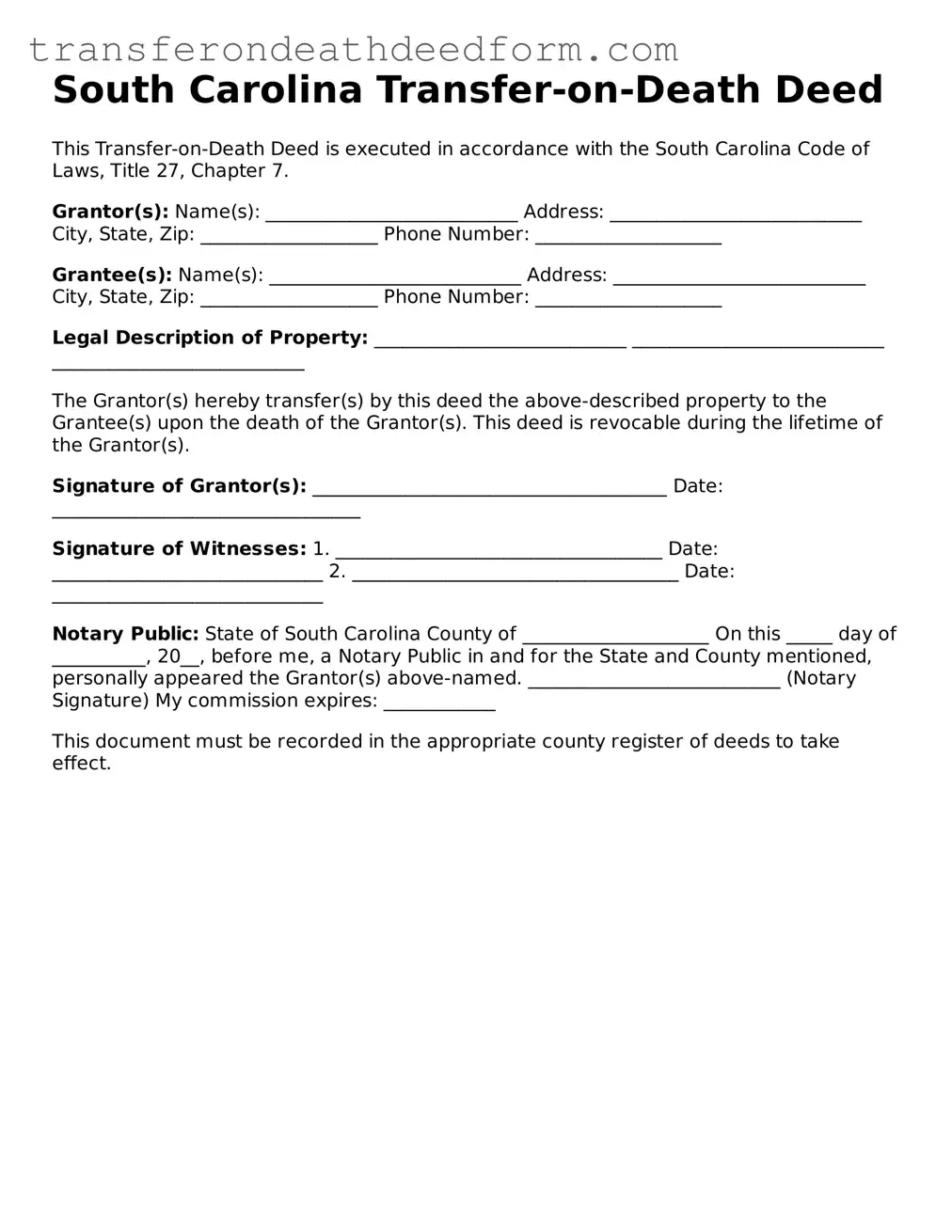South Carolina Transfer-on-Death Deed
This Transfer-on-Death Deed is executed in accordance with the South Carolina Code of Laws, Title 27, Chapter 7.
Grantor(s):
Name(s): ___________________________
Address: ___________________________
City, State, Zip: ___________________
Phone Number: ____________________
Grantee(s):
Name(s): ___________________________
Address: ___________________________
City, State, Zip: ___________________
Phone Number: ____________________
Legal Description of Property:
___________________________
___________________________
___________________________
The Grantor(s) hereby transfer(s) by this deed the above-described property to the Grantee(s) upon the death of the Grantor(s). This deed is revocable during the lifetime of the Grantor(s).
Signature of Grantor(s):
______________________________________
Date: _________________________________
Signature of Witnesses:
1. ___________________________________
Date: _____________________________
2. ___________________________________
Date: _____________________________
Notary Public:
State of South Carolina
County of ____________________
On this _____ day of __________, 20__, before me, a Notary Public in and for the State and County mentioned, personally appeared the Grantor(s) above-named.
___________________________ (Notary Signature)
My commission expires: ____________
This document must be recorded in the appropriate county register of deeds to take effect.
